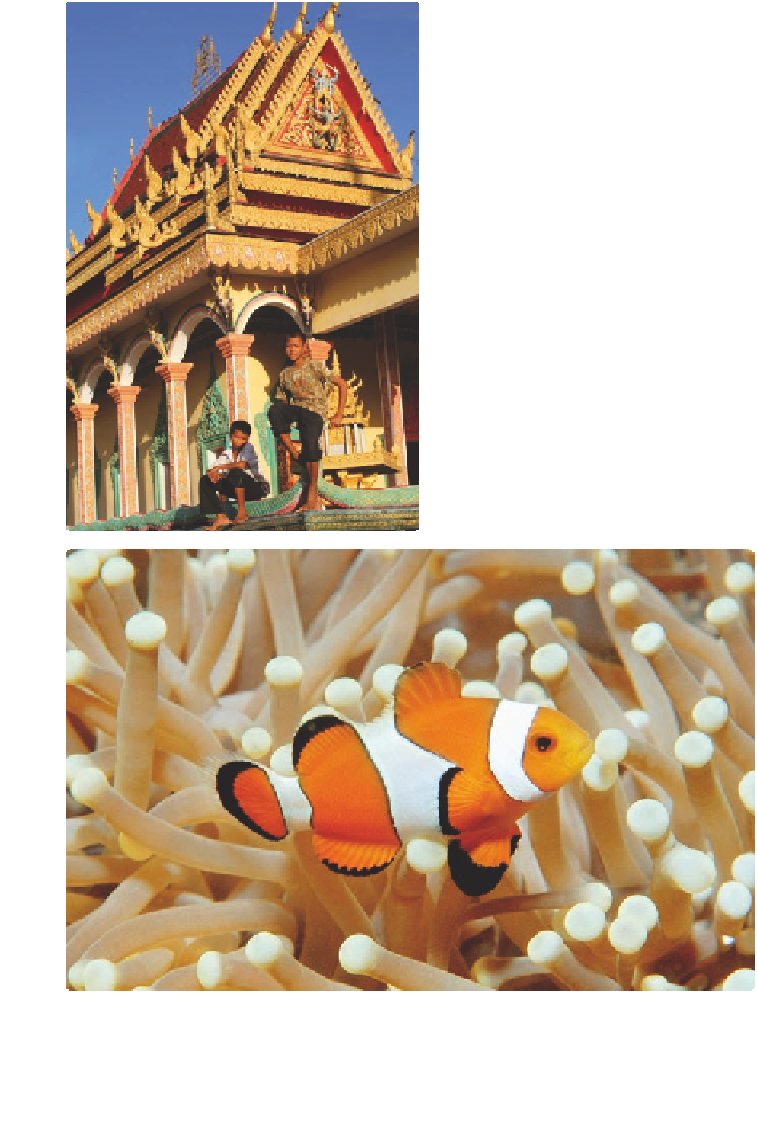Travel Reference
In-Depth Information
393 A BIODIESEL BUS AROUND
CAmBODIA
day from their homes is run on biodiesel too.
Planet Biodiesel also has ambitious plans
to set up microbusinesses that will recycle
toxic materials into usable products; to build
Cambodia's first public children's playground;
and to establish a medical training centre in
Sihanoukville. It's the best of both worlds:
you get an eco-friendly tour guided by locals,
and your fees go towards a charity working
determinedly to improve Cambodia's quality of
life and environment.
A visit to the temples of Angkor Wat, followed by
the Killing Fields around Phnom Penh and the
idyllic islands of Ream National Park, gives you
a taste of Cambodia's highlights. Do it differently
with Sihanoukville-based
Planet Biodiesel: guests
on the seven- or twelve-
day tours are transported
between these attractions
in a bus (or boat, for the
islands) powered by biofuel
manufactured from used
cooking oil from nearby
restaurants. So pollution is
virtually nil.
There's also the chance
to stop in at a sight not on
most people's itineraries
- the school run by the
organization, which
educates local children
whose parents can't afford
to send them to school.
Unsurprisingly, the bus
that picks them up each
Wat in Cambodia; False crown
anemone fish, Apo Island,
Negros, Philippines
Need to know
For details of tours, rates and
reservations see
W
planetbiodiesel.org;
T
+855
1656 0511. The website also has info on the
school and other charitable projects.
394 DIvE ApO ISLAND, ThE
phILIppINES
Seven kilometres south of the island of Negros
lies little Apo Island, whose crystal-clear waters
harbour a thriving population of turtles, coral
reefs and 650 varieties of tropical fish. What
makes the richness of the marine life here all
the more amazing is that a few years ago there
was almost no reef, and these waters were
practically devoid of fish.
By the 1970s, after years of
destructive fishing practices, the
situation had deteriorated so much
around Apo that fishermen were
forced to go to other islands, often
for weeks at a time. That all changed
in 1982 with the founding of the
Apo Island Marine Sanctuary, which
keeps ten percent of Apo's waters
free of fishing, thereby providing
a breeding and feeding ground for
marine life. Visitors today pay a small
fee to the sanctuary on top of their
diving costs to be able to step off the
beach and swim out to one of the best
diving sites in the world.
There are no cars on the island,





Search WWH ::

Custom Search